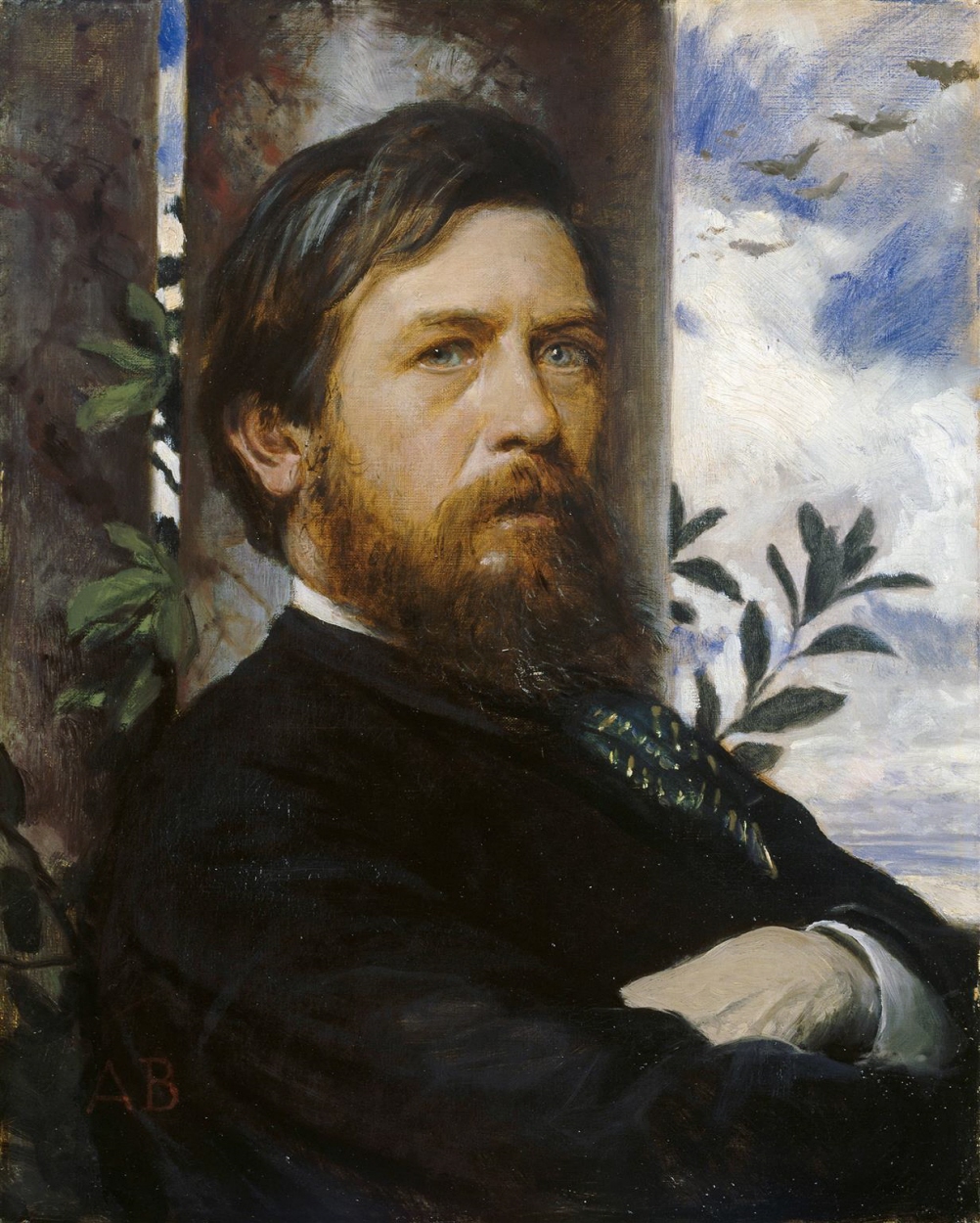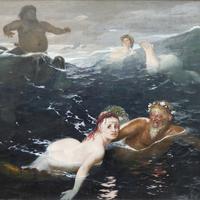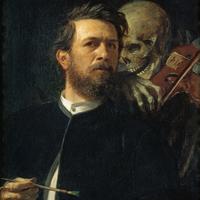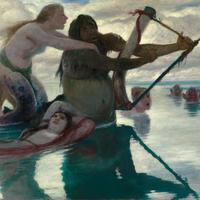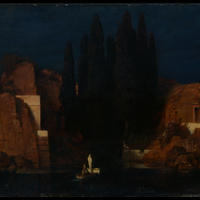More about Arnold Böcklin
Works by Arnold Böcklin

Contributor
Arnold Böcklin’s landscapes are impressive, but what’s even more impressive is his contribution to Symbolism, which doesn’t just mean reading too much into an artwork.
Symbolism developed as a reaction to both the pre-modern hierarchy of painting genres, in which the best types of paintings were of specific historical or biblical scenes, and to early Impressionists’ focus on realism and objectivity. Symbolist artists attempted to expand the content of painting beyond these categories. Instead of just painting various buff dudes to represent the same few religious or mythological stories, they drew on literature, niche fantasy, abstract ideas, and the artist’s own feelings and thoughts. In this way, Symbolism paved the way for later movements such as Abstract Expressionism and Conceptual art, both of which revolve around how the artist explores an emotion or idea. Böcklin never described himself as a Symbolist, but his work was deeply influential for later Symbolists, such as Gustav Klimt.
Arnold Böcklin was a Swiss-born artist, and his family was patriotic enough to name him after a character in a play about William Tell, one of the few Swiss folkloric figures to be famous outside of Switzerland (he legendarily shot an apple balanced on his son’s head). However, after his art education in France, he spent a lot of his life traveling, particularly to Italy. He fell in love with the daughter of a papal guard at the age of twenty-six, but their families resisted the marriage for many years because of their religious differences (she was Catholic, while Böcklin’s family was Protestant). She was also nine years younger than him at the time, which isn’t as bad of an age gap as some artist-muse relationships, but still probably would raise eyebrows today.
Likely thanks to the time he spent in Italy and the Mediterranean, Böcklin’s art tended to include motifs from Greco-Roman mythology and classical imagery, such as centaurs, naiads, and picturesque Roman temples. Plenty of his paintings deal with these subjects in an ironic or tongue-in-cheek fashion, which didn’t particularly please fans of Neoclassicism’s serious treatment of the same themes. In spite of this criticism and accusations of kitschiness, Böcklin soon became one of the most iconic late nineteenth-century European artists. His popularity was helped by his dealer’s willingness to mass-produce lithographic reproductions of his paintings, and works like The Island of the Dead soon were in everyone’s living room (at least, for people who had living rooms). German nationalists associated themselves with Böcklin, although he died in 1901 and focused primarily on Greek and Roman history. His artistic legacy extended well into modernism, with artists such as Marcel Duchamp citing him as an inspiration.
Sources
- “Arnold Böcklin.” Artstory. Accessed Aug 21, 2018. https://www.theartstory.org/artist-bocklin-arnold-life-and-legacy.htm
- Rapetti, Rodolphe. “Landscapes and Symbols.” In Van Gogh to Kandinsky: Symbolist Landscape in Europe 1880-1910, pp. 17-40. Thames & Hudson Inc., New York.
- Vinocur, John. “The Burlesque, and Rigor, of Arnold Böcklin.” The New York Times, Jan. 12, 2002.
Featured Content
Here is what Wikipedia says about Arnold Böcklin
Arnold Böcklin (16 October 1827 – 16 January 1901) was a Swiss Symbolist painter. He is best known for his six versions of the Isle of the Dead, which inspired works by several late-Romantic composers.
Check out the full Wikipedia article about Arnold Böcklin

